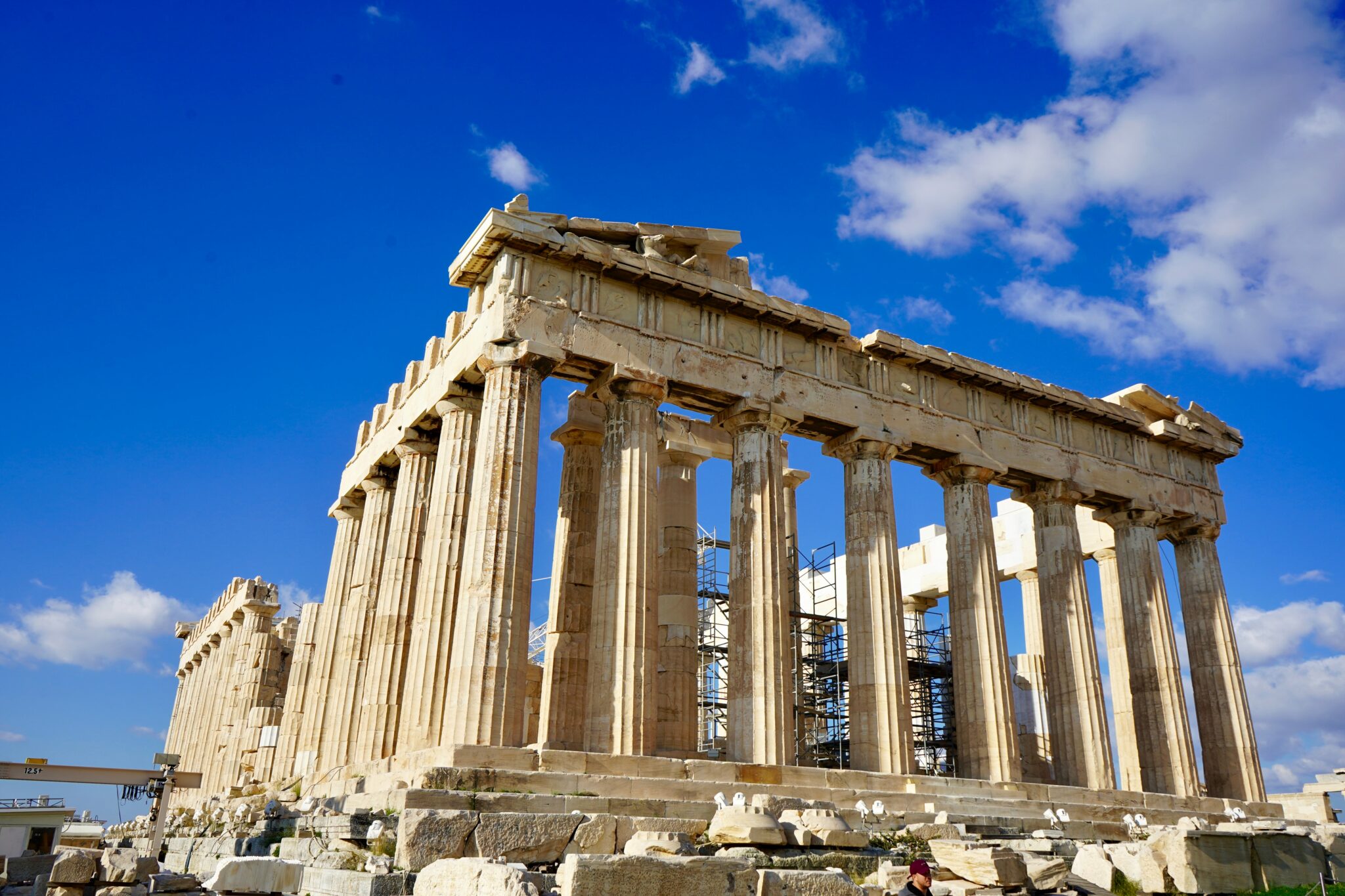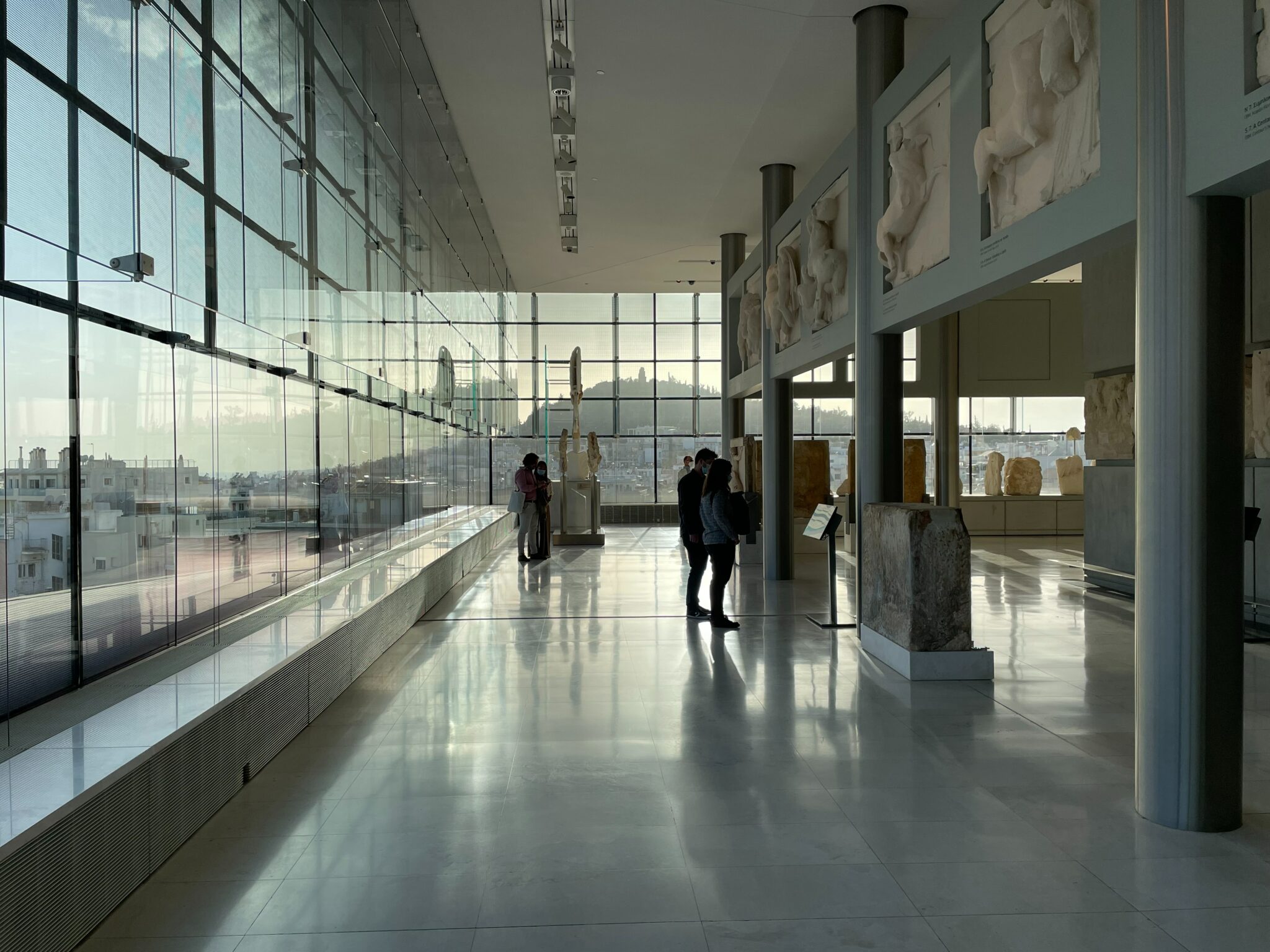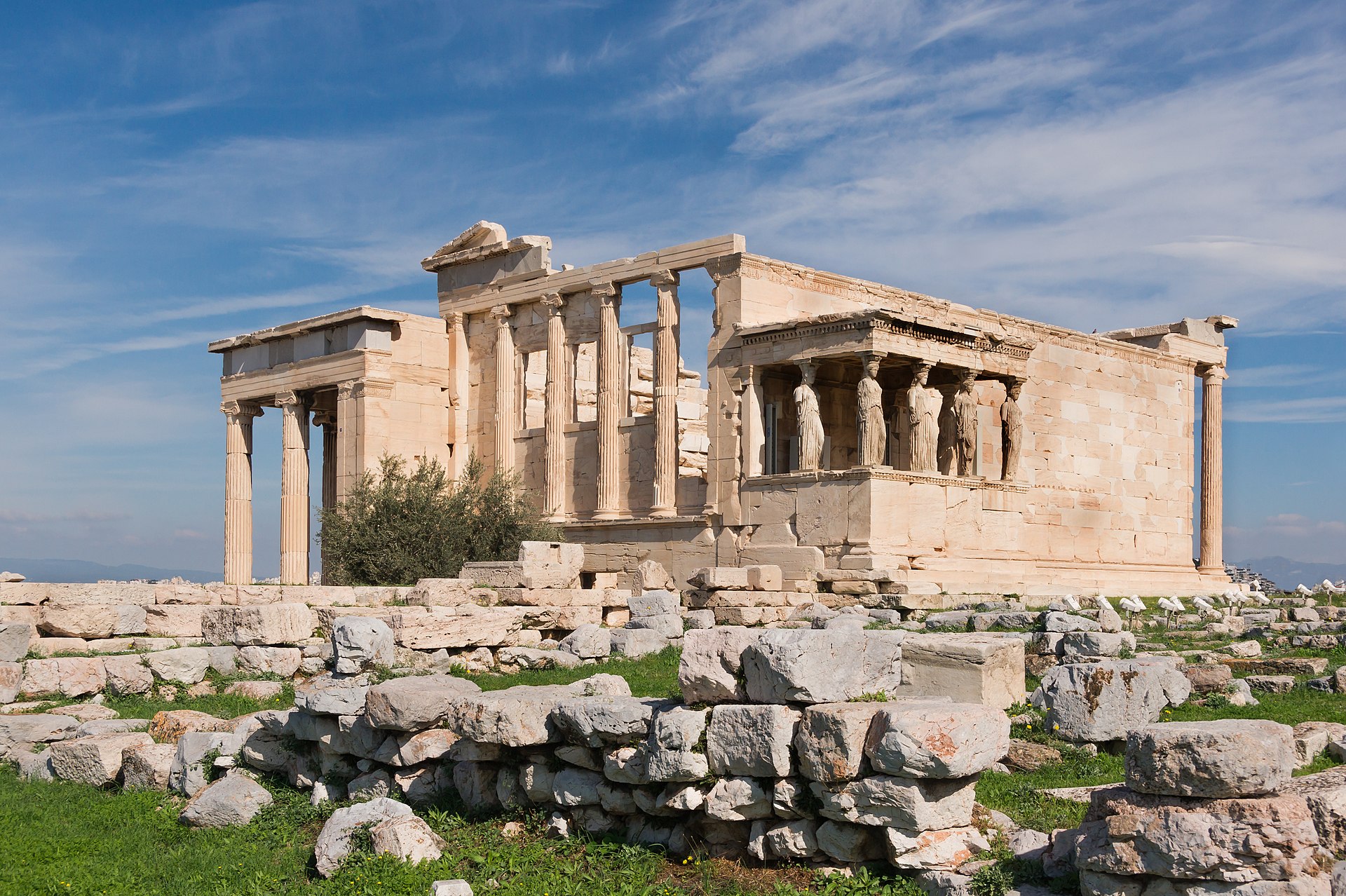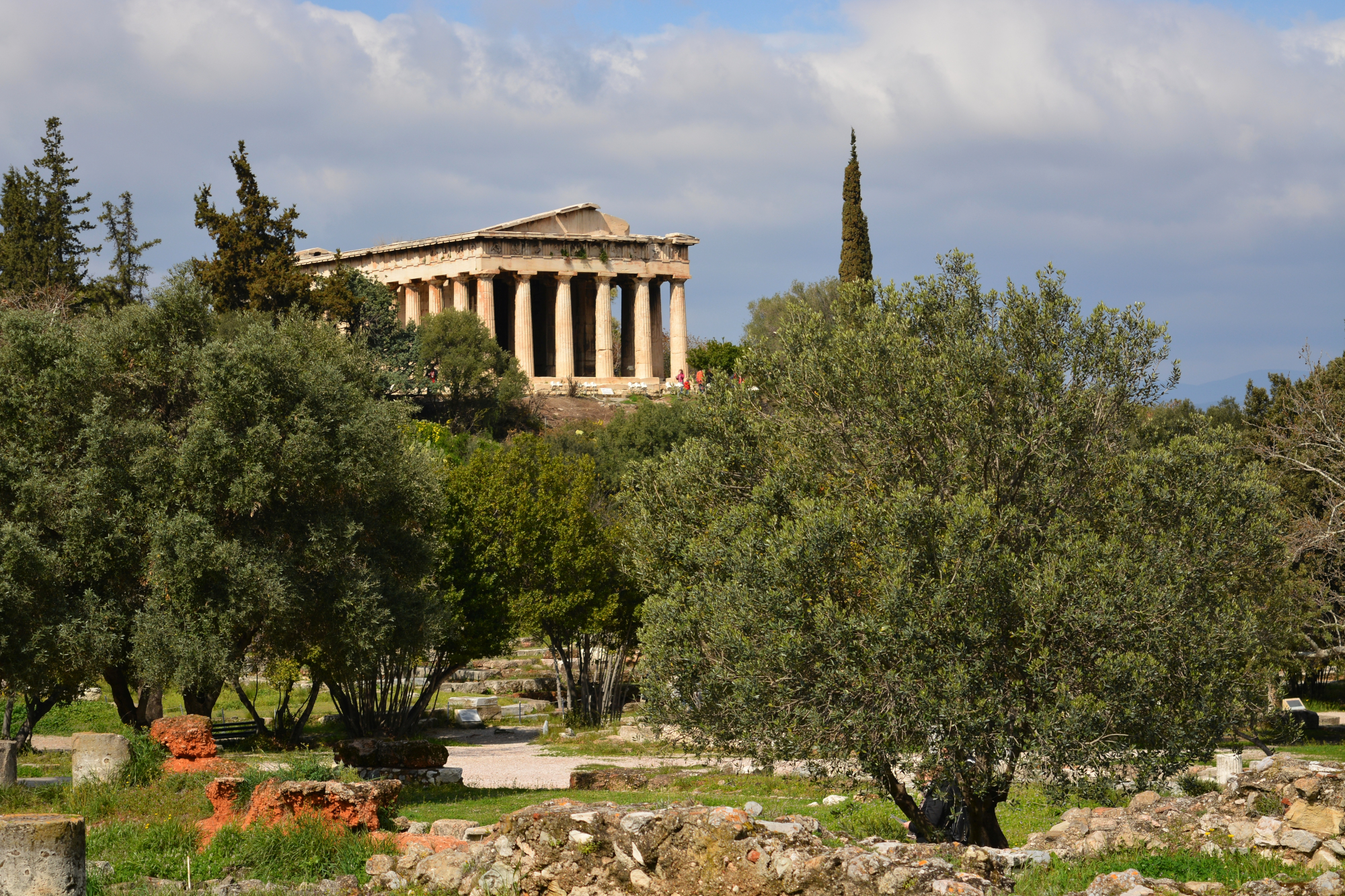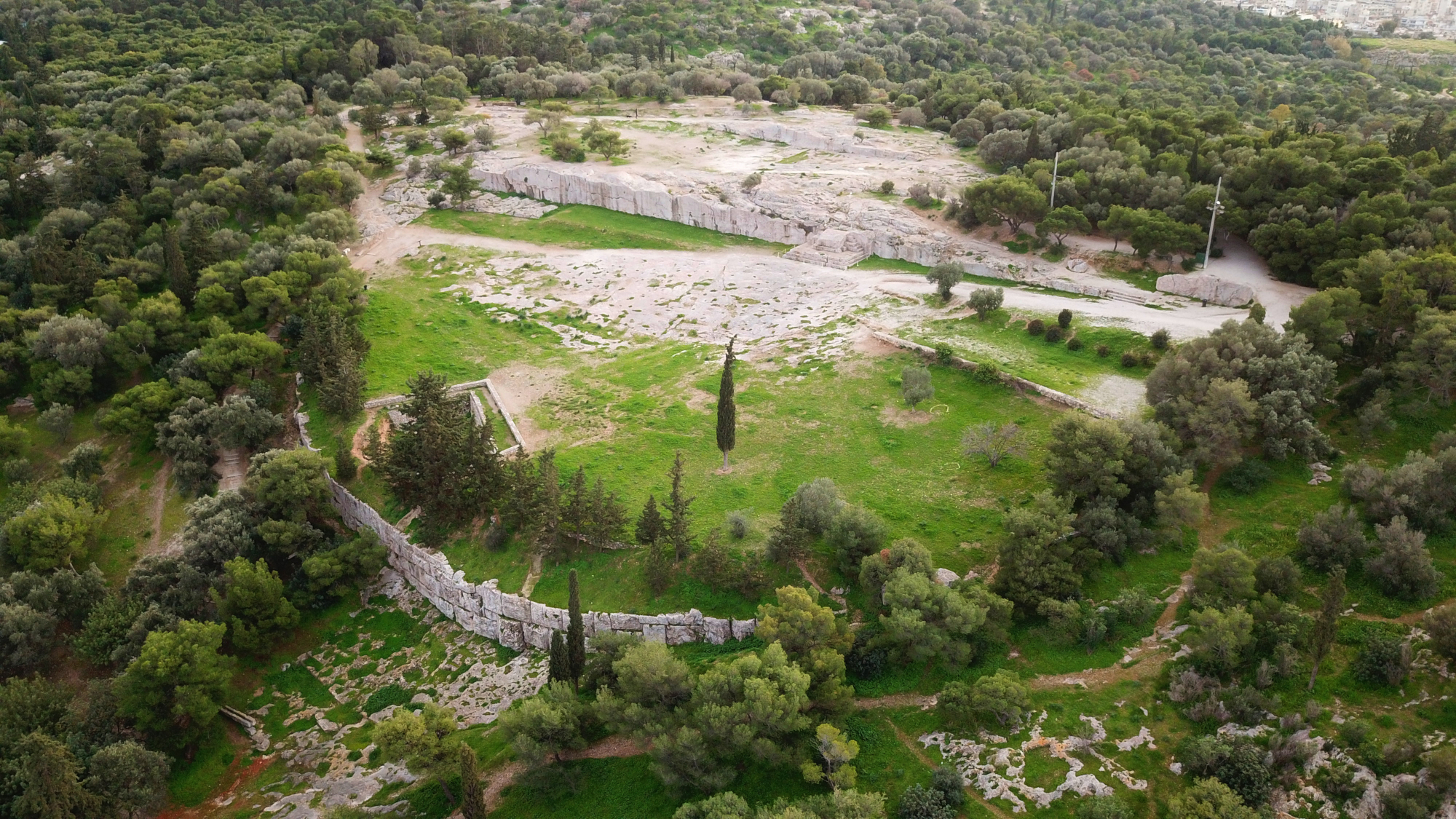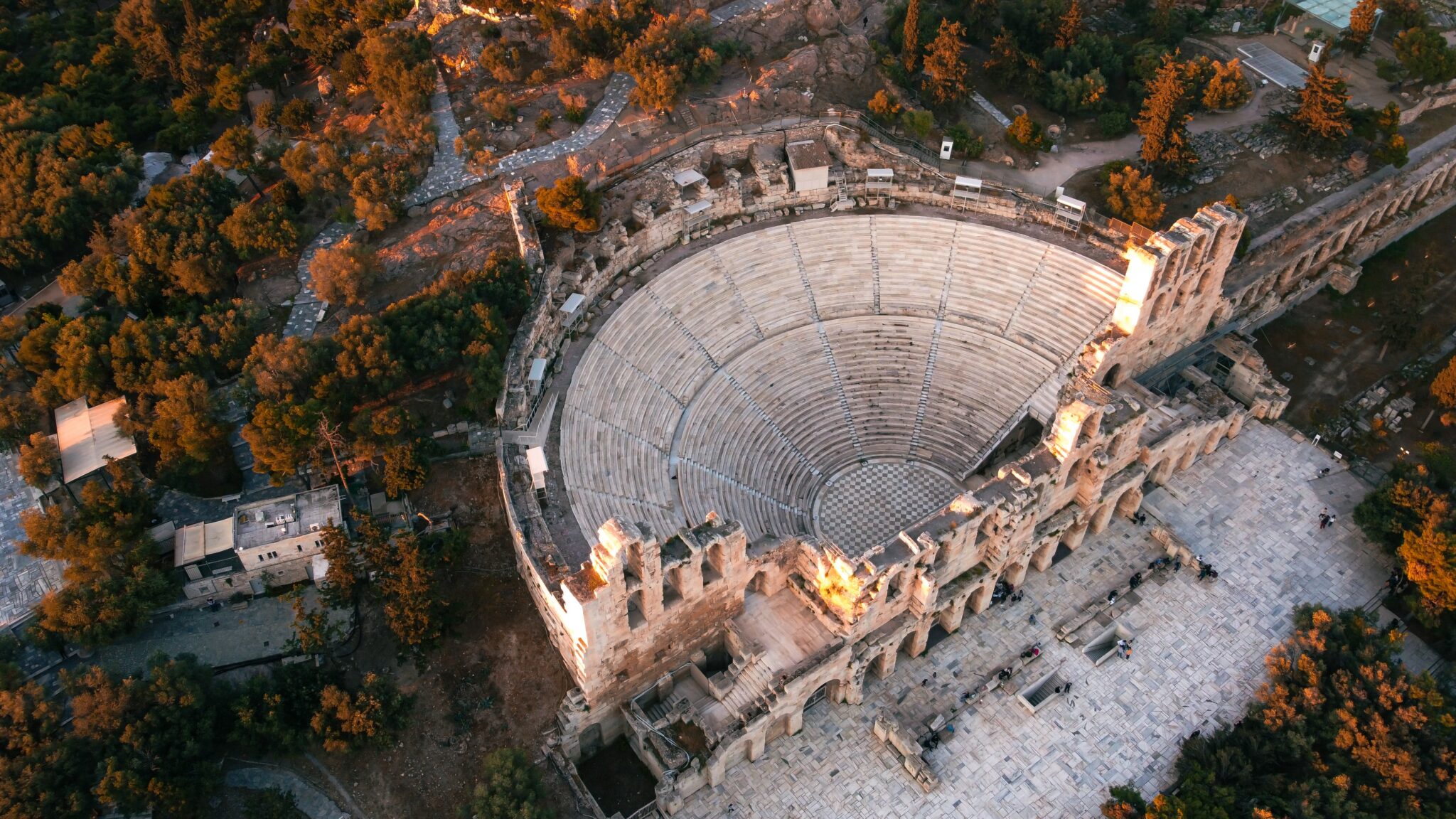Museums and monuments of archaeological interest, commercial streets, modern and neoclassical buildings compose a unique setting for your visit to Athens.
The New Acropolis Museum: Internationally regarded as one of the most complete and modern museums of its kind, the Acropolis museum is certainly unique. In many places the floor is transparent, leaving excavation sites below in plain view. The first of the museum’s three floors is home to objects from the slopes of the Acropolis. The second houses collections of objects from the Archaic period of Athens (7th century BC-480 BC) and the third has exhibits from the excavations and restorations carried out on the monuments of the Acropolis.
On the third floor, visitors can see what the sculptural decoration of the Parthenon would have looked like at the time of its creation. The temple’s original architectural pieces, the metopes and pediments, are displayed alongside replicas of marbles that have been destroyed or are held in museums abroad. The museum café has a view of the Acropolis. Guided tours are available. (15 Dionysiou Areopagitou Street. Tel. 210 9000900-1)
The Acropolis: The term Acropolis refers to a settlement on the highest part, or the extremities, of a town. The most famous acropolis of all is that which dominates the Athens skyline and is home to the Parthenon. The complex of temples and shrines, and most of the ruins on the Acropolis, are associated with the ‘Golden Age of Pericles’ (5th century BC).
The Parthenon: This Doric temple is dedicated to the goddess Athena. Its construction lasted from 448 BC to 438 BC. Reliefs on its metopes (triangular architectural sections) depicted images of the Battle of Gigan, the Trojan War, the Amazons’ War and the Battle of the Centaurs. Sculpted in its pediments were scenes from mythology related to the life of the goddess Athena. The famous gold and ivory statue of the goddess Panoply offering victory to the Athenians once stood in the sanctuary. Unfortunately it has not survived.
Erechtheion (The temple of Athena Polias): At the temple of Athena Polias, on the north side of the acropolis, you can find copies of the famous Caryatids, the statues of six daughters which make up the columns supporting the roof. Scholars disagree on their origin, carved either by the sculptor Alcamenes, or by Callimachus.
Propylaia: A complex monumental structure at the central entrance to the Acropolis. What the visitor sees today is the work of the architect Mnesicles, built between 437-432 BC.
Near the Acropolis
The Ancient Market: The Agora of classical and Hellenistic times was the beating heart at the centre of the political, social and commercial life of ancient Athens. The Agora was the meeting place of the great political and intellectual men of the time – Pericles, Socrates, Plato.
Attalo Stoa: Built at the expense of the king of Pergamum, Attalus II (159 BC – 138 BC), it housed a bustling commercial centre. Today it is home to the Museum of the Ancient Agora.
Roman Agora: Built between 19 -11 BC with donations from Roman rulers, it housed the new commercial centre of the city.
Ares Pagus: The Aryan Pagos, the supreme court of the city-state of Athens, met here.
The Pnyx: A rocky hill, with a stone speaker’s platform. This is the home of the first form of direct democracy in the world, where every citizen had the right to speak, vote, be voted for, and actively participate in public affairs.
Theatre of Dionysus: It is no exaggeration to say that the European theatre was born here. The theatre hosted performances of ancient drama as part of the festival of the Great Dionysia.
Herod of Atticus: The Herodion, as it is better known today, was built at the expense of the Athenian aristocrat Tiberius Herod of Atticus. Since 1957 its stage has been used for concerts and performances during the Athens Festival and other events. (www.greekfestival.gr)
Philopappos Hill and Monument: From the summit, the view of the Acropolis, Athens and the Argo-Saronic Gulf is impressive. The monument was dedicated to the 9 Muses ( daughters of Zeus in Greek mythology), an architectural innovation of the time, as the Roman arch was combined for the first time with a Greek pediment. It was built by the Athenians in 131 AD in honour of the Hellenistic Emperor Hadrian.
Dionysiou Areopagitou Sreet: The most beautiful pedestrian street in the centre of Athens. At the beginning of the walk is the new Acropolis Museum, the Dionysus Theatre, the Makriyannis Mansion and a number of the most elegant neoclassical buildings of the city. Then there is the Herodion. If you want, you can take a detour to see the archaeological site of the Pnyx and continue the walk to Apostolou Pavlou Street. From there you descend to the area of Thiseion full of cafes and restaurants, and with views of the Acropolis.
Read also:
Why the petite Petraki Pedestrian Street in Central Athens shouldn’t be Missed



